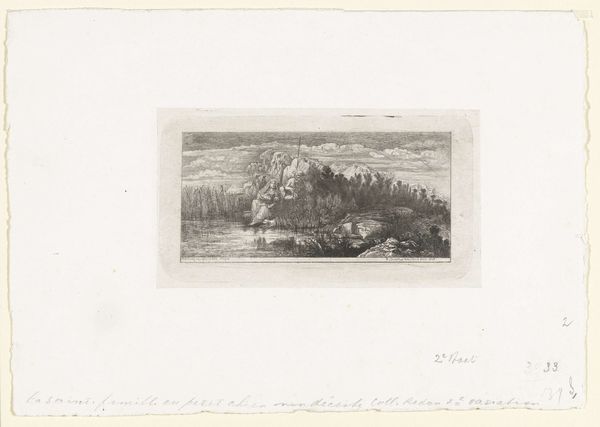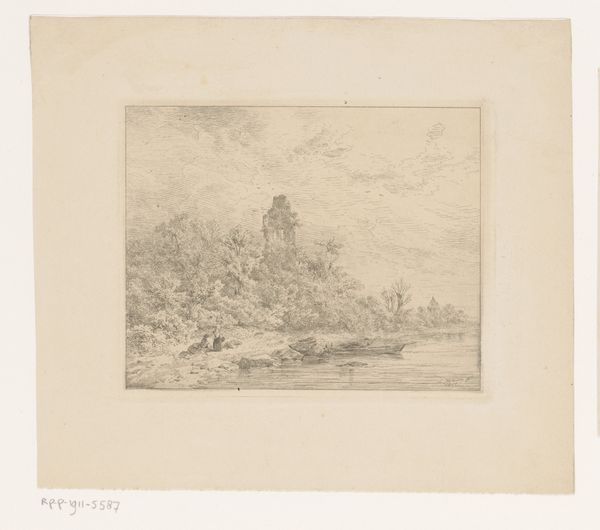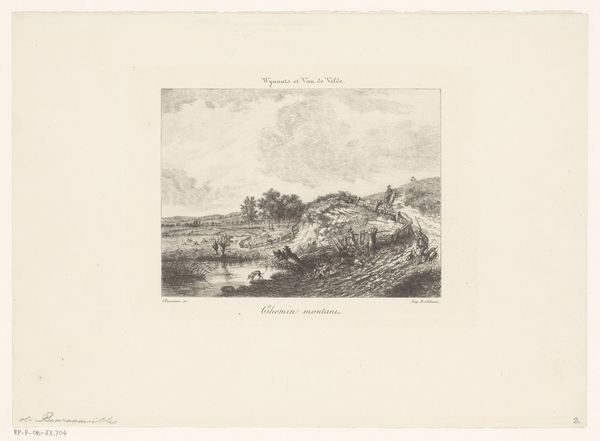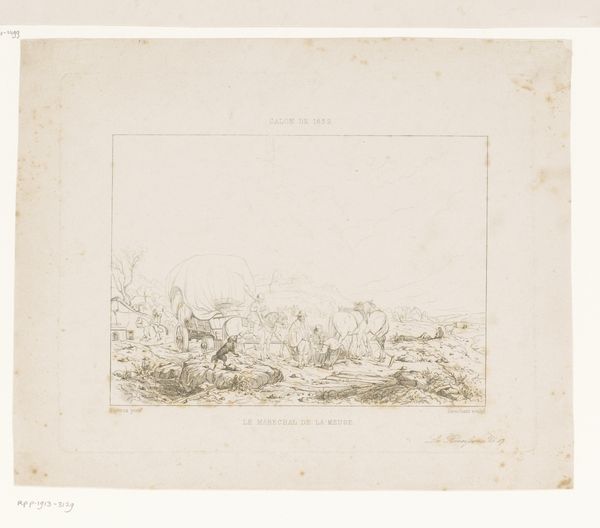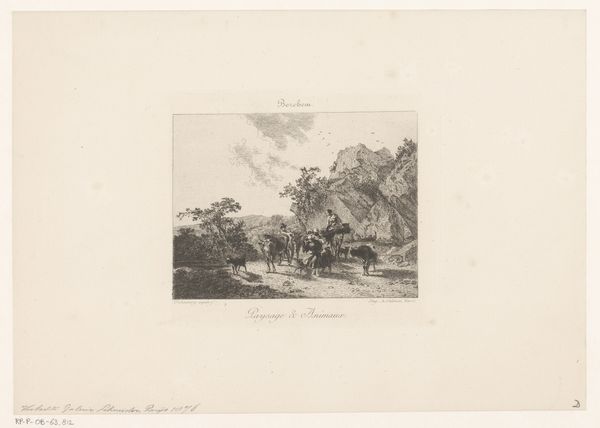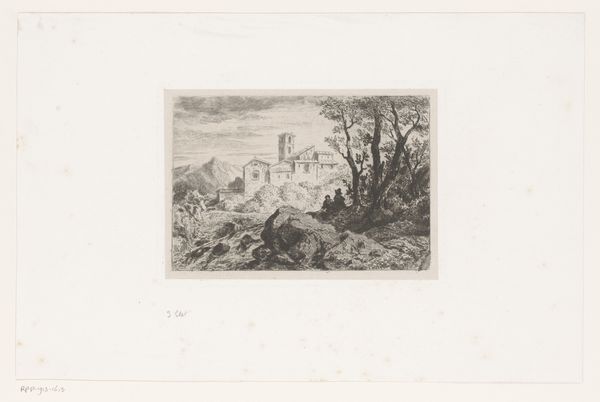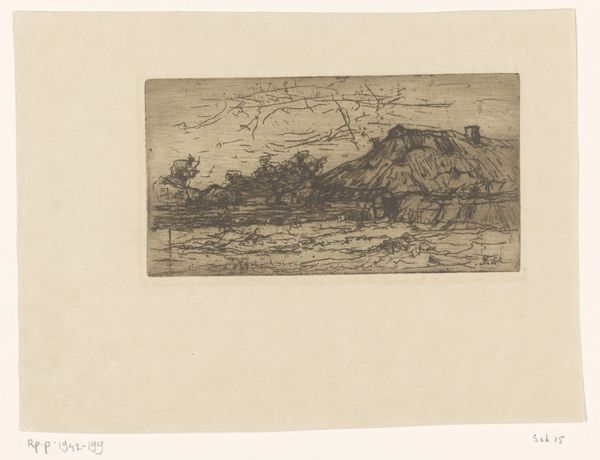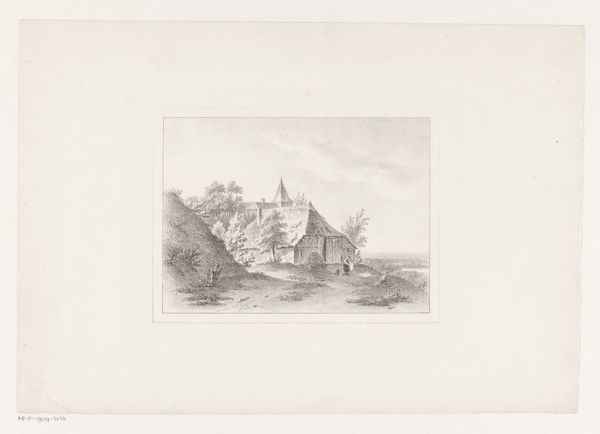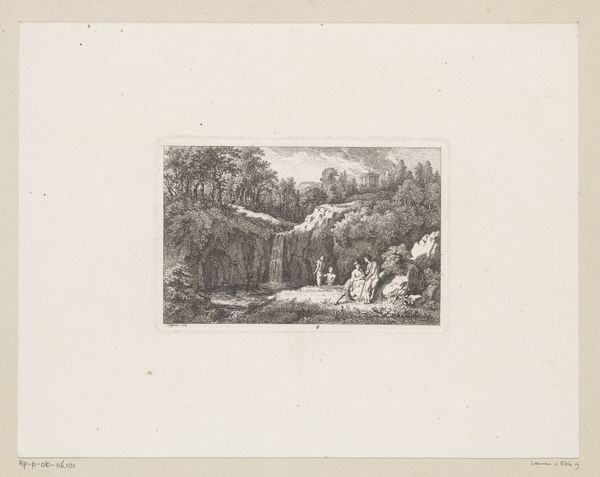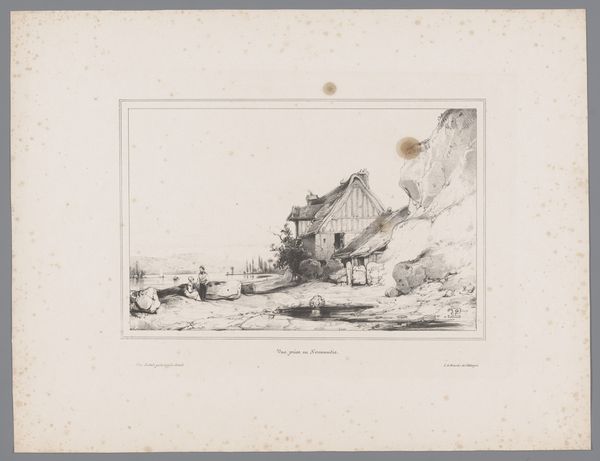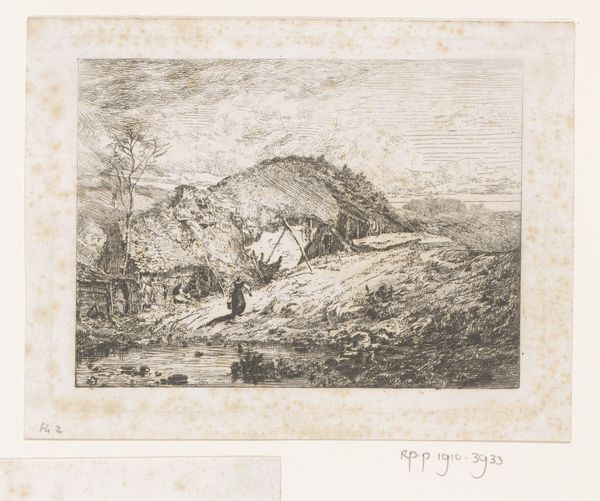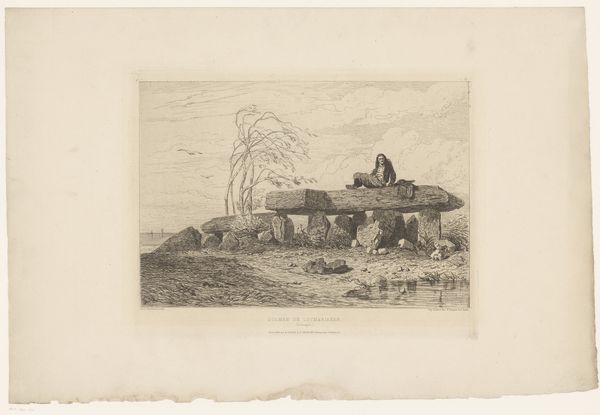
drawing, print, etching
#
drawing
# print
#
etching
#
landscape
#
etching
#
realism
Dimensions: height 181 mm, width 236 mm
Copyright: Rijks Museum: Open Domain
Curator: This is Frans Lauwers's etching, "Ducks in the Farmyard," dating from sometime between 1864 and 1911. Editor: There's a starkness to the rendering here— the textures almost brittle. The image quality suggests we might be looking at humble labor portrayed without sentimentality. Curator: Absolutely. The means of production for a print like this involved careful handling of materials – copper plate, acid, ink – and considerable manual skill. The multiple states a printmaker works through serve as evidence of both physical effort and a sustained thought process. It blurs boundaries; it is accessible and widely distributed while also very clearly ‘Art.’ Editor: Focusing on those ducks for a moment—they're clustered near a crumbling fence, their presence lending a cyclical feeling to the farmyard tableau. There's the worn fence perhaps signifying passing eras and life unfolding regardless. The ducks also signify themes of domesticity. They're almost archetypal images here in a stage setting of the natural order. Curator: Note how the lines vary in weight, achieving both detail and atmosphere without resorting to overtly painterly effects. It all stems from the considered application of acid to metal. And what about the social context? To whom was Lauwers selling these images? Were they meant for framing or for insertion in publications? The 'why' dictates value, reception. Editor: You’re right; thinking about its reception brings a new light to the piece. Looking at the old wooden structure, that slanting lean almost makes me think of ruins or remains—decay into memory itself. It becomes a meditation upon life. The duck is the focus now in the composition! Curator: Etching, due to its relative ease compared to engraving, aided greatly to wider dissemination of art; the art market's commodification via reproducible mediums changed everything. Editor: Interesting how this detailed glimpse into the rural past continues to reverberate. It reminds us to connect the physical work done and with our lives' continuous rhythms. Curator: For me, it reinforces a profound appreciation of what careful labor yields and its social meaning. Editor: For me, this modest scene becomes deeply symbolic of mortality and renewal through symbolic resonance.
Comments
No comments
Be the first to comment and join the conversation on the ultimate creative platform.

